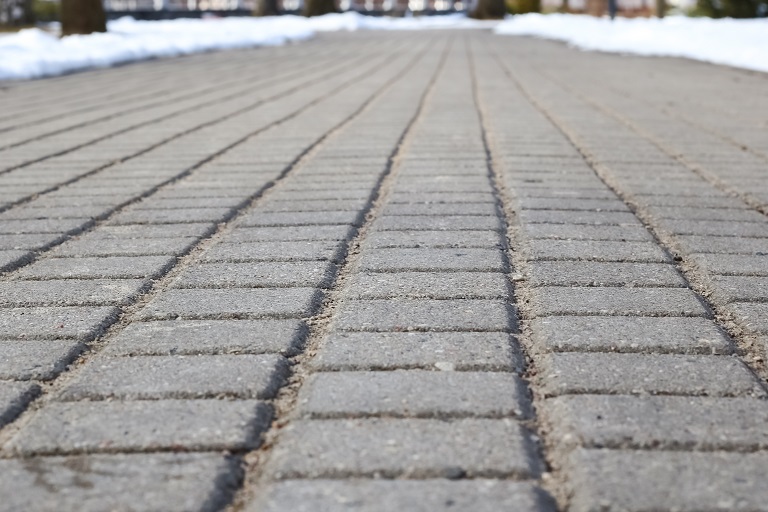7 Signs You Should Invest In Ice Melt For Brick Pavers

When winter hits, it can be a messy time for your brick paver areas. Without the correct ice melt, your home or business can suffer from pitting, staining, and discoloration. Fortunately, there are ways to identify when to invest in ice melt for brick pavers. And although salt and calcium chloride may do the trick, there are other best ice melt for brick pavers on the market that don’t damage surfaces or corrode metal and concrete.
The edges of your brick pavers look pitted.
If you notice the edges of your brick pavers look pitted, it might be time to invest in ice melt. Pitting is a sign of erosion caused by salt and ice melt. You can prevent this by using chemicals-free, non-toxic, and environmentally friendly. Safe Thaw is a safe alternative to rock salt and other chemical-based ice melts. It’s the best ice melt for bricks and works equally well on concrete, asphalt, and bluestone.

You notice flecks of blue on your brick pavers after a storm passes.
After a storm passes, you notice flecks of blue on your brick pavers. This is a sign of salt damage. Salt can cause discoloration and staining, as well as slippery conditions—and it may eventually harm the integrity of your bricks.
To prevent these issues, invest in the best ice melt for brick pavers prior to winter weather events like snow storms or rain showers.
Your brick pavers are slippery.
Did you know that a brick paver is one of the most slippery surfaces in your home? Did you also know that they can be slippery even when there isn’t snow or ice on them?
If your brick pavers are already slippery because of snow, rain, or other moisture, then adding a thin layer of ice melt will make things even more treacherous.
100% salt & chloride-free, fast acting Ice Management Solution
Your brick pavers have a greasy feel to them.
If you’re not sure whether your brick pavers are covered in ice melt residue, try running your hand across the surface of one. If it feels greasy, that’s a sign that ice melt has been applied.
This grease can be removed from your brick pavers using a power washer. The power of the water will blast away any excess salt or other materials from the surface of your pavers.
There is a thin film of snow and ice on the surface of your sidewalk.
If you see a thin film of snow and ice on the surface of your sidewalk, this is another sign that you need to apply more ice melt. It’s crucial to ensure that your sidewalk is completely clear before walking on it.
Salt and ice melt accumulate in the corners of your brick paver area.
As the snow melts and refreezes, salt and ice melt accumulate in the corners of your brick paver area. This then causes damage to your pavers because the water can’t get through the cracks in between bricks, so it just sits there until you sweep it away.
You’ve been using the same salt or ice melt since last winter
If you’ve been using the same salt or ice melt since last winter and have had no problems, it may not be necessary to change it now. As we discussed above, salt and ice melt slowly degrade over time. While this means they won’t lose their effectiveness right away, it will eventually happen. Therefore, it’s time to invest in the best ice melt for composite decking.
Try Also Our Other Winter Safety Products:
Safe Paw
The Original and #1 Selling Pet and Child Safe Ice Melt for over 20 years. Guaranteed environmentally safe –It won’t harm animals or children, and it won’t damage your property. That’s Safe Paw. Safe Paw can change how winter affects our planet.

Walk On Ice
Prevent slips at home, work or on the go, The handy disposable canister can be taken everywhere, with the same 100% naturally occurring minerals that provide instant traction on ice or snow. Use it on sidewalks, steps, or as an instant traction agent for your car.


